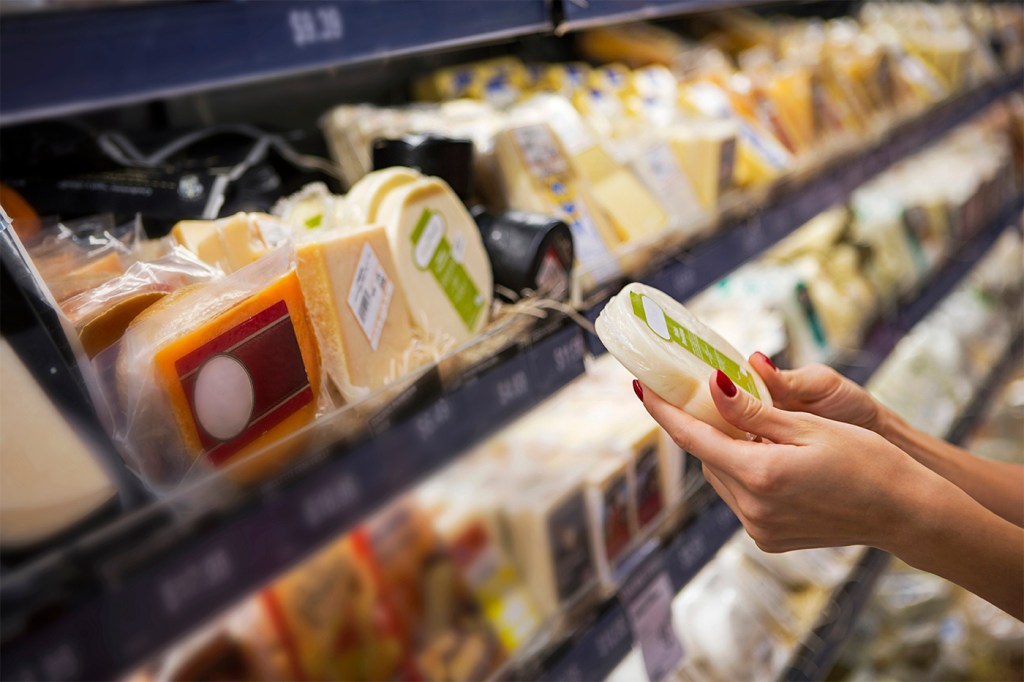Why it took a decade to find the source of a deadly listeria outbreak

When federal officials this week identified a California cheese and dairy company as the source of a decade-long outbreak of listeria food poisoning that claimed the lives of two victims and sickened many others, some people asked what had taken so long.
Northeastern University food safety policy expert Darin Detwiler says the real question should be what advances in science allowed government officials to connect the dots among cases first detected in June 2014.
The answer is advances in genetic testing, in particular whole genome sequencing, says Detwiler, associate teaching professor of food policy.
The government has known about different outbreaks, but didn’t realize the listeria food poisonings were all part of the same family until sequencing proved it, Detwiler says.
“These were previously considered to be separate incidents, but technology was able to connect them,” he says. “This gives the CDC a completely new perspective on some of these pathogens.”

The lab technology and other evidence has linked the outbreak to soft cheeses and other dairy products made by Rizo-Lopez Foods of Modesto, California, according to the Associated Press.
On Tuesday, the Centers for Disease Control and Prevention said the company was recalling more than 60 products sold under 13 brands.
The listeria was found in containers the products were stored in before being packaged, Detwiler says, adding that “every time a new product was going through those containers, it was being contaminated.”
Listeria culprits hard to locate
The CDC says public health investigators are using a system called PulseNet that compares the DNA fingerprints of bacteria from patients to identify illnesses that may be a part of this outbreak.
Detwiler says that the sources of listeria food poisonings historically have been hard to identify because most people recover without going to the doctor and because symptoms — including fever, vomiting and muscle aches — can take up to 70 days to show up.
“Think about it — what did you eat two months ago? People (who are food poisoned) always think, ‘What did I eat last night?’”
Three people who got sick between 2014 and 2022 reported eating queso fresco or cotija from Don Francisco, one of the brands of recalled cheeses, the CDC says.
But not all of the 22 food poisoning victims interviewed by state and local public health officials recalled the brands of foods they ate or even having eaten soft cheeses, the CDC says.
Featured Posts
Deaths and stillbirths
Listeria is a type of bacteria that “grows predominately in soft cheeses and lunch meats,” Detwiler says.
Unpasteurized raw milk — from which many soft cheeses are made — is a common source, he says.
The bacteria can get into finished food products from cross contamination of equipment in manufacturing and storage facilities, as happened with the Rizo-Lopez Foods storage containers.
The CDC says the brands recalled were sold nationwide and include Campesino, Casa Cardenas, Don Francisco, Dos Ranchitos, El Huache, Food City, La Ordena, Rio Grande, Rizo Bros, San Carlos, Santa Maria, Tio Francisco, and 365 Whole Foods Market.
“For the average healthy adult, listeria food poisoning is just a quote unquote stomach flu,” Detwiler says.
For elderly and very young people, as well as pregnant women and those who are immunocompromised, the story can be very different, he says.
The CDC says of the 26 people infected in 11 states with the outbreak strain of listeria between June 15, 2014, and Dec. 10, 2023, 23 were hospitalized and two deaths were reported — one from California and the other from Texas.
Two people got sick during pregnancy and one suffered a miscarriage, according to the CDC, which says listeria can cause pregnancy loss, premature birth and life-threatening infections in newborns.
In his role as a national advocate for food safety, Detwiler has talked to women who have lost pregnancies to listeria outbreaks and finds they harbor a sense of guilt even though they were attempting to make healthy food choices.
“They were eating a salad with cheeses on it,” he says.
And while most people who get listeria poisoning recover, other victims suffer lifelong medical complications, Detwiler says.
Better detection
Detwiler says tools such as whole genome sequencing will continue to prove helpful in detecting the sources of food poisoning outbreaks.
“We’re talking about the advancement of science getting to look at cases on such a granular level,” he says.
Detwiler compared the DNA technology to people knowing about the existence of President William Taft but not knowing they are related until they undertake genetic testing.
“It’s kind of like that,” he says. “The government knew these outbreaks were taking place. They didn’t know it was all connected.”
Detwiler says not only is there better detection of food poisoning outbreaks now, states are required to share information with the federal government in a way that did not exist 31 years ago when the death of his young son due to a Jack in the Box outbreak of E. coli led to his becoming a passionate advocate for food safety.
In addition to using PulseNet to compare the DNA fingerprints of bacteria from patients, the federal government also uses a data tool called Foodnet to estimate the extent of an outbreak and disseminate information about it. Detwiler says that is an important development in halting outbreaks.
“For every one person reported to have a medically reported (food contamination) illness, there are around 22 who go unreported,” Detwiler says. “Doctors can’t report what they can’t see.”











